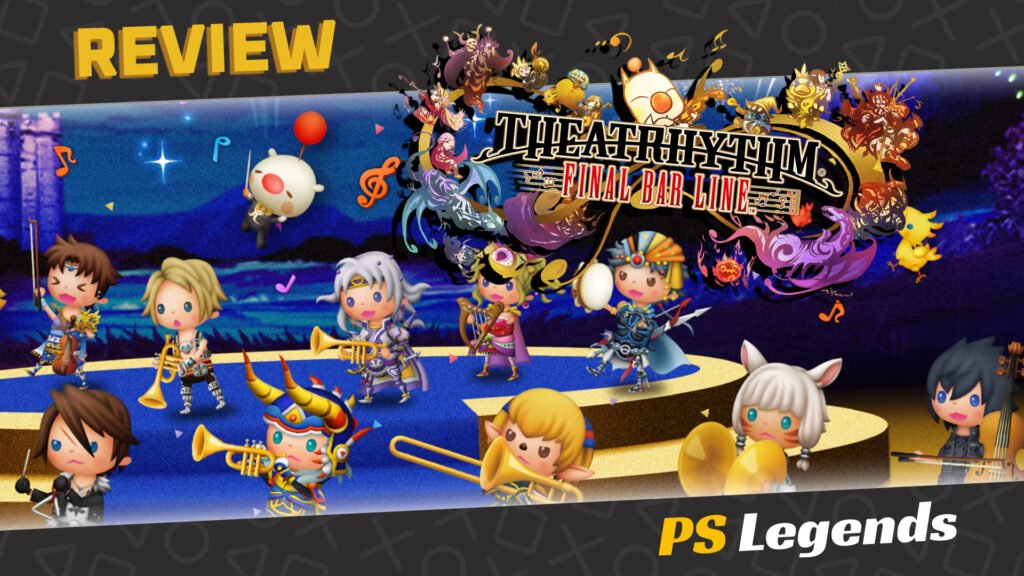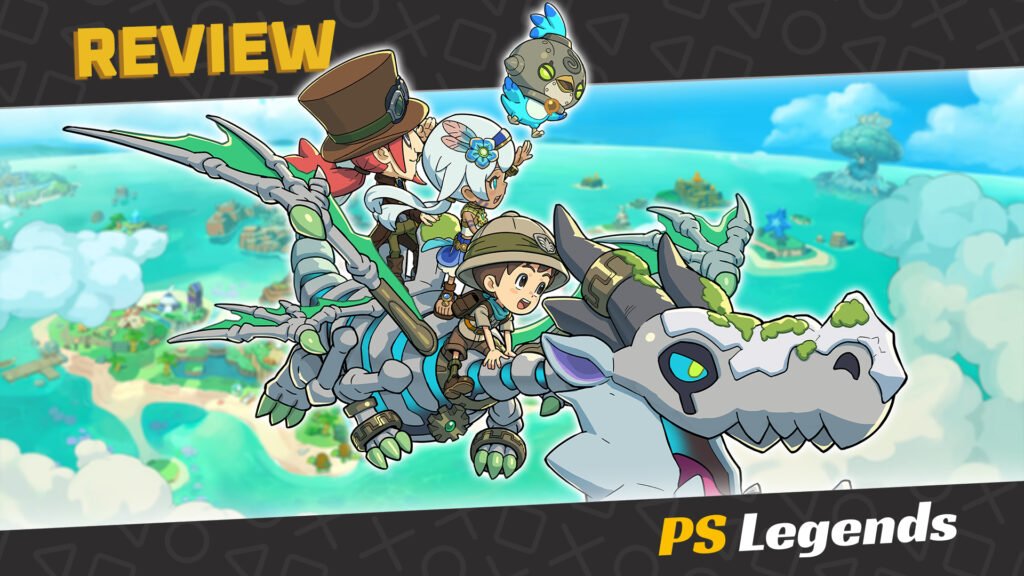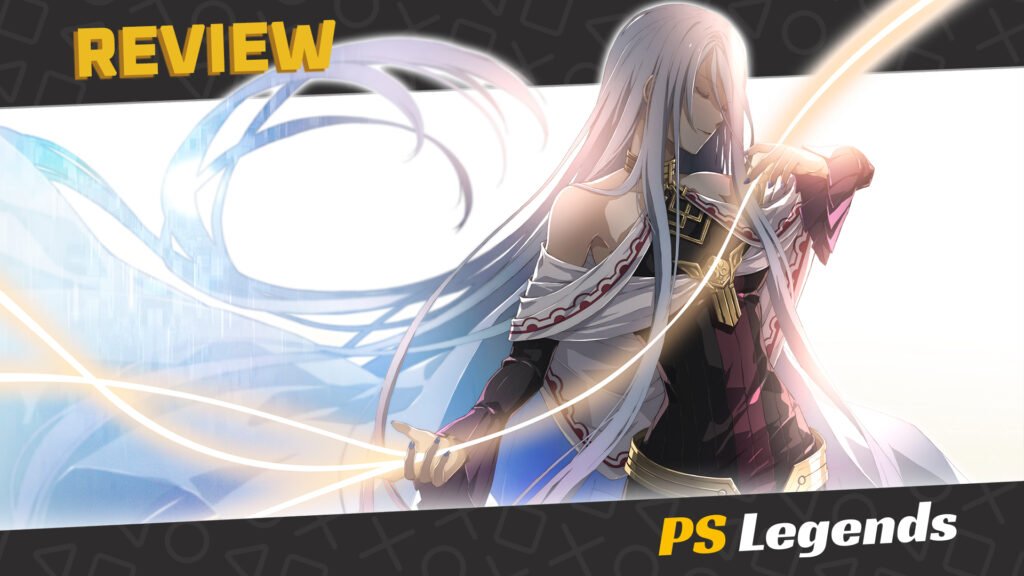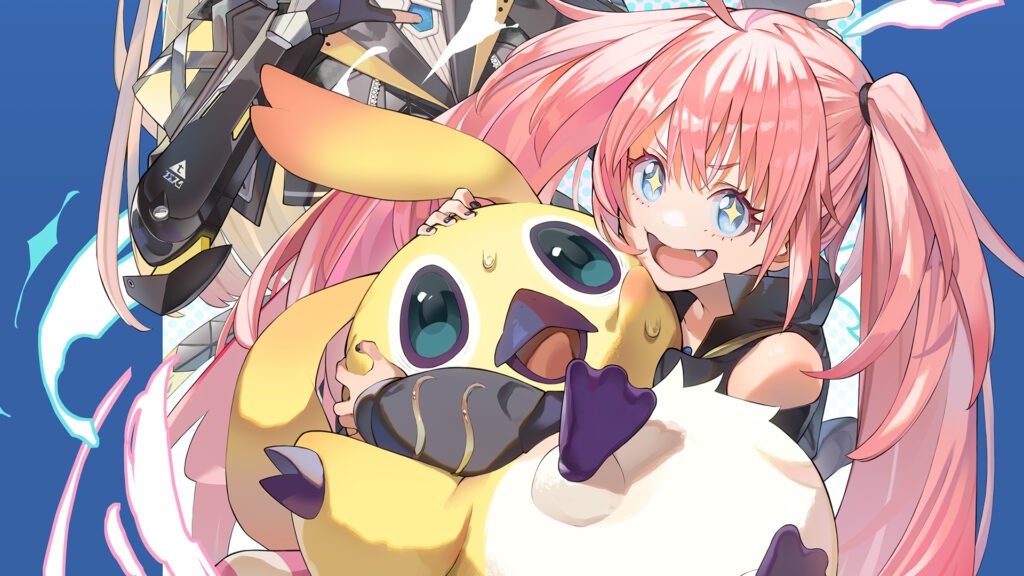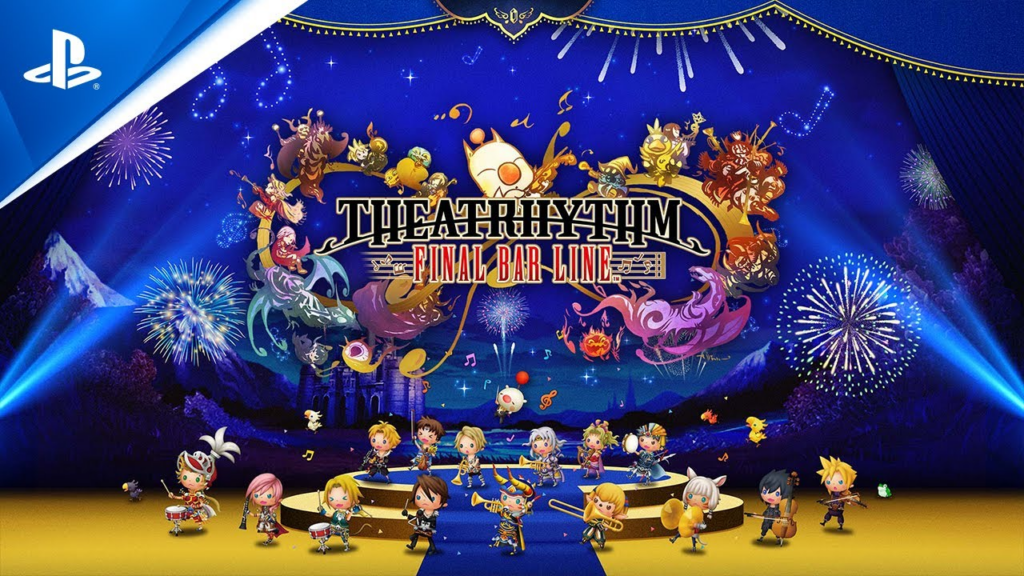
Can we all agree that Nobuo Uematsu is a genius? What an amazing career and still going strong. From a midi-sound producer in the 80s, to forming his own band, and conducting an entire orchestra; the guy is something of a legend.
The Theatrhythm games feel like a long-overdue tribute to Uematsu’s works, showcasing his best tracks and those of others he has inspired or collaborated with. Credit to all involved.
On This Page
Introduction
Theatrhythm Final Bar Line is a musical rhythm game developed by indieszero and published by Square Enix for the PlayStation 4. It is actually the fifth entry in the Theatrhythm series, following Theatrhythm Final Fantasy (2012), Curtain Call (2014), Theatrhythm Dragon Quest (2015) and the arcade-exclusive Theatrhythm Final Fantasy: All-Star Carnival (2016).
Acting as a sort of ‘Greatest Hits’ compilation for the Final Fantasy series, the assortment of music has been expanded to encompass various Final Fantasy mainline and spin-off favourites, as well as Square-Enix franchises outside of the flagship Final Fantasy series via DLC. It was released on February 16th, 2023.
Newer music has also been added from Final Fantasy XIV, XVI and the VII Remake in addition to the mobile games Mobius Final Fantasy and Record Keeper.

Gameplay
Theatrhythm is part music game and part JRPG. Guided by the onscreen icons, the player must press one or more face buttons and flick the thumbsticks in time with the music. Doing so influences the efficiency of your selected party members in the simplified 2D battles occurring in the background. Miss notes and your team will take damage and possibly need to heal or risk incapacitation and game over.
Note charts in Final Bar Line are the ones from All-Star Carnival and introduce multiple simultaneous inputs, sometimes calling for four inputs at once from any of the buttons (including shoulder buttons) or for two simultaneous Slide inputs moving both the left and right sticks in different directions.
Event Music Sequences, which return from Curtain Call, have been drastically reworked, now being played from a top-down view similar to Theatrhythm Dragon Quest. Pair Mode, where two players can play together, also returns from All-Star Carnival, as does the added Supreme difficulty on some songs. In addition, the multiplayer mode, Multi Battle, can now accommodate up to four players per room instead of just two.
Your party members will also level up after battles depending on the number of enemies defeated, granting stat boosts and new skills which activate during combat while also finding collectible virtual trading cards and summonable creatures to assist in battle and making your party that bit more efficient. Each stage also has a quest attached to it, such as completing with a certain character in your party or defeating a specific boss before the song ends.

Graphics/Sound
In all honesty, the character graphics have an unflatteringly basic mobile game look to them, with basic Funko-Pop-like faces and movements like they’re made from different bits of paper. The backgrounds are otherwise fine but if the actual game wasn’t as fun as it is I doubt many would be so forgiving of the visuals. Fortunately, you’re far too focused on the actual notes to really get absorbed in what else is going on onscreen.
Additionally, all Event Music Sequence scenes have been re-shot, with ‘Opening’ from Final Fantasy Tactics now having its footage from the original PlayStation release, rather than the pre-rendered cutscenes from The War of the Lions re-release. Flashy animation sequences showcasing the stunning battles of Final Fantasy VII Advent Children are sure to steal the show.
You’ll find songs from the entire Final Fantasy catalogue here so you’re pretty much guaranteed to find tunes you know and love. Whilst there will always be a song or two that’s missing from this greatest hits compilation (Final Fantasy X HD remaster new battle theme, anyone?) with a staggering 385 tracks included in the base game, you’re still more than getting your money’s worth, though I would prefer the orchestrated Pixel Remaster soundtrack for Final Fantasy I-VI rather than the old chip music.
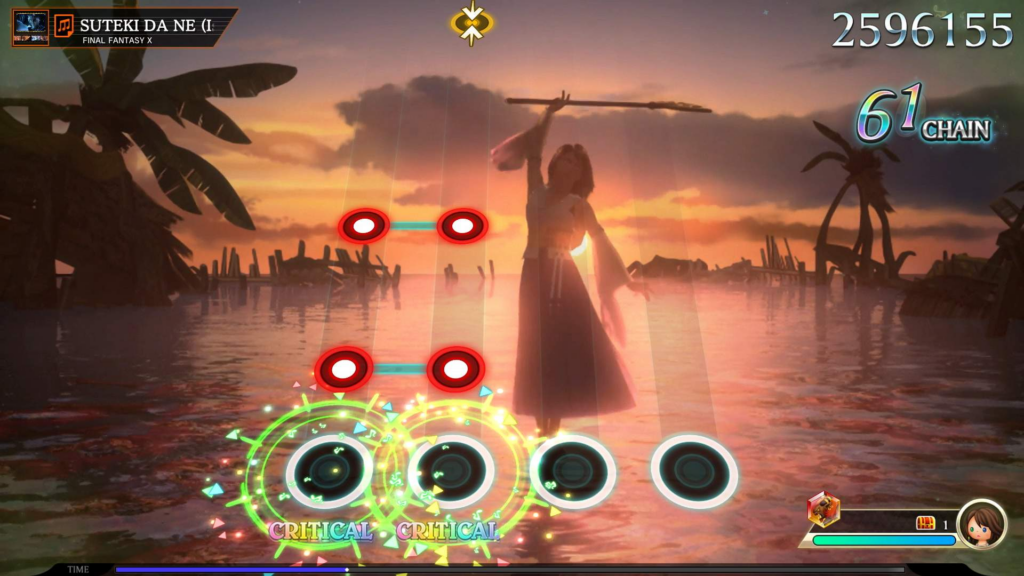
Replayability/Trophies
There’s certainly plenty to do, maybe too much. You see, Theatrhythm falls into the same pitfall as most other music games out there, in that it can only ever be as good as its songs. Once you’ve finished all the songs from your favourite games in the series, powered up your favourite characters and finished the Theatrhythm quest-line featuring some remixed favourites then you’ll have finished everything you may consider essential in maybe 10-15 hours.
It’s then that you have a choice to make. Do you stop now and end your time on a high note or do you play on and aim to finish every last song, every quest and earn every trophy in the process? It’s a tough choice. The former grants you a short yet memorable experience whilst the latter brings rewards for one hell of a grind. Like many, I felt I’d seen everything worth seeing and opted for the former. What will you do?
In addition, music from other Square Enix games is available as paid downloadable content. Specifically, music from SaGa Frontier was available on release day, with later packs including music from Live A Live, The World Ends With You, Octopath Traveler, Nier, Xenogears, the Chrono series and the Mana series.
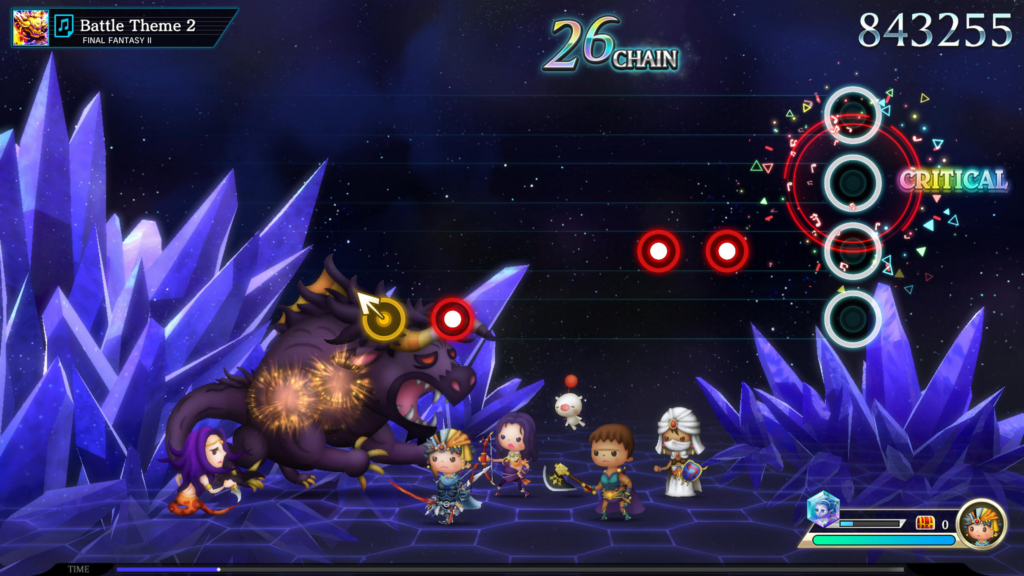
Conclusion
Where Theatrhythm differs from even the most action-focused Final Fantasy games is in its story, which is something I’ve largely sidestepped until now. You see, while the game offers musical re-enactments of iconic Final Fantasy battles, the story behind those moments isn’t here at all, and this isn’t the only way Final Bar Line cuts corners.
Unfortunately, the collection of characters available isn’t at all thorough, with only usually 4 or 5 from each major game included. This became an issue for me when playing through the Final Fantasy VIII quest-line where I envisioned a party of my favourite characters, Squall, Selphie, Irvine and (my goddess) Quistis, only to find the latter three cut from the game entirely. This occurs across most titles available and spoils that re-enactment of iconic battles.
I would rather see more characters included to deliver that authenticity, even if a few tracks had to be sacrificed to do it. Nevertheless, the staggering amount of tracks available here, even in just the base game, is very impressive. You’re guaranteed to find familiar tracks which you know and love. There’s a simple yet addictive rhythm game here too, all wrapped up in an explosive Final Fantasy package. Not a life-changing game, but certainly fun for a while.
Joys
- A staggering 385 Final Fantasy tracks available
- Simple interface
- Plenty to keep enthusiasts busy
Cons
- Very basic visuals
- No real story of its own
- A very long and repetitive platinum journey
